The fascinating Regent Bowerbird (Sericulus chrysocephalus) is a medium-sized bird that can only be found in Australia. Its distinctive feature is its striking sexual dimorphism, as the male possesses black plumage and bright golden orange-tipped crown, mantle and wing feathers that make it a sight to behold. The bird’s yellow beak, black legs and yellow iris enhance its captivating appearance. On the other hand, the female has a more subtle coloration with brown feathers and whitish or tawny spots. However, it still exudes an attractive quality with its gray beak, black legs and crown. Interestingly, the bird is named after a former prince regent of the United Kingdom.
The Regent Bowerbird can be found primarily in the rainforests and fringes of eastern Australia, specifically from central Queensland to New South Wales. This unique species is endemic to the biogeographic realm of Australasia and is truly a gem of Australian flora and fauna.
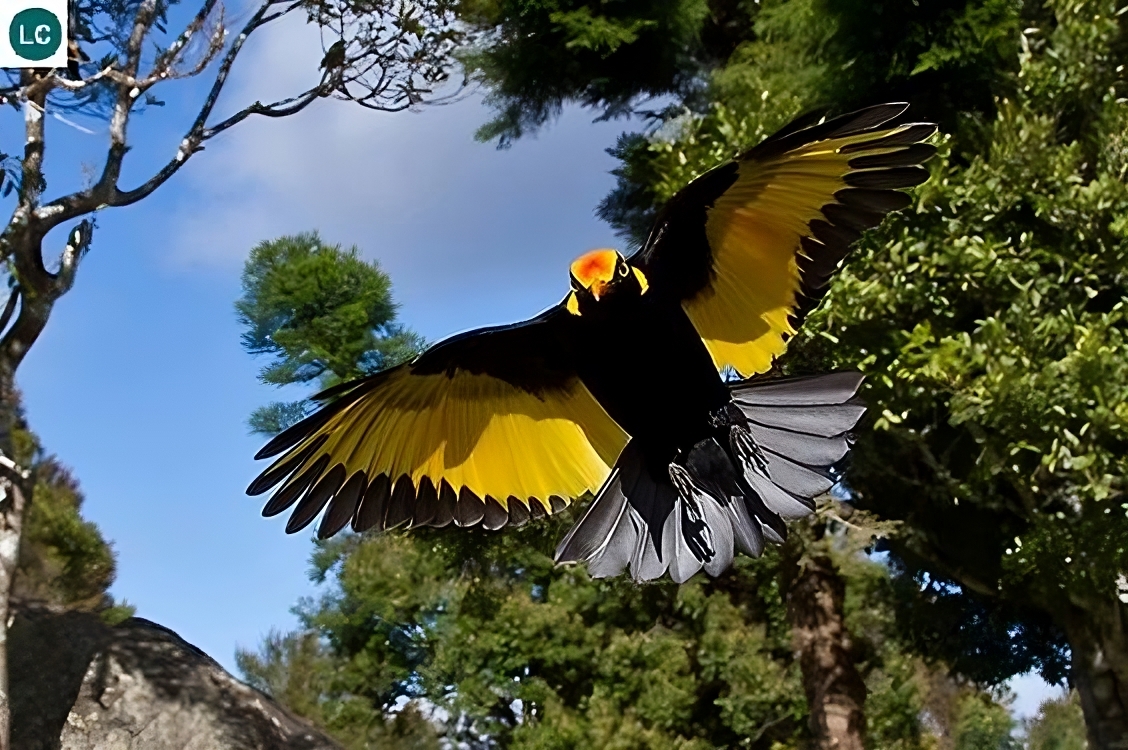
The habits and lifestyle of the Regent Bowerbird are truly fascinating. These birds are known for building impressive arbors to attract potential mates, and males create meticulous structures made of sticks adorned with shells, seeds, leaves and berries. What’s even more interesting is that the male uses a unique technique to enhance the attractiveness of the bower: he creates “saliva paint” by mixing cloudy gray-blue or pea-green substances in his mouth. Using greenish leaves as tools, the male carefully spreads this paint, which is a rare case of tool use observed in birds. On the other hand, the female builds a saucer-shaped nest made of twigs that measures about 30 cm high and 15-20 cm wide, often located far from the male’s bower.
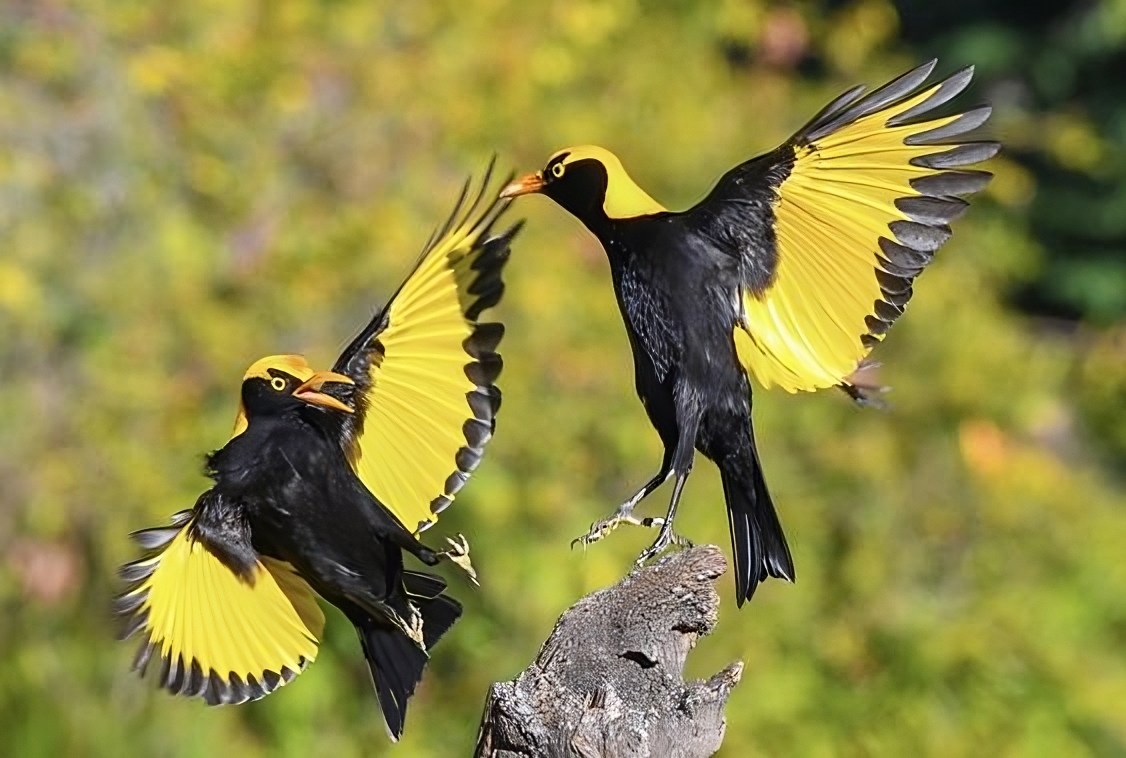
When it comes to what the Regent Bowerbird likes to eat, it’s mostly fruits and vegetables. This little bird enjoys a diet consisting mostly of juicy fruits, tasty berries, and even a few insects for good measure.
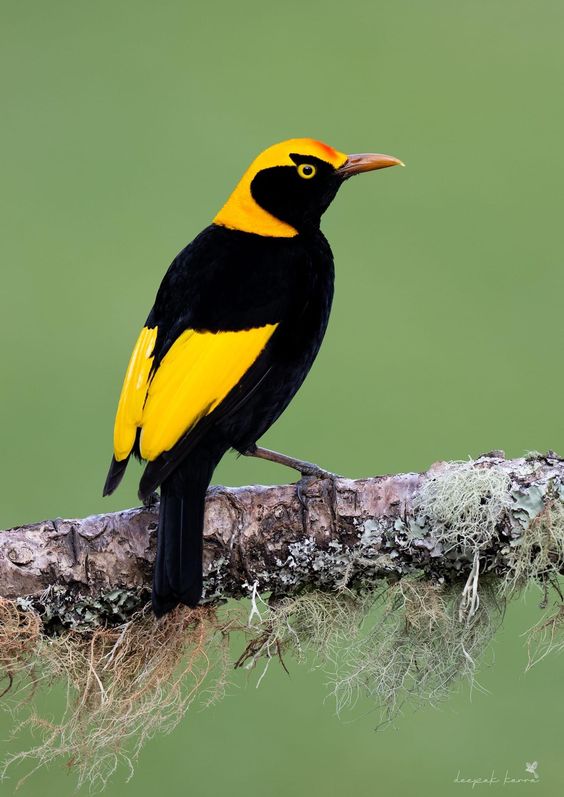
The Regent Bowerbird has unique mating habits that involve both polygamy and polygamy. To attract numerous female mates, the male bird creates an arbor. But once the mating process is completed, the male does not participate in raising the offspring, leaving the responsibility to the female.
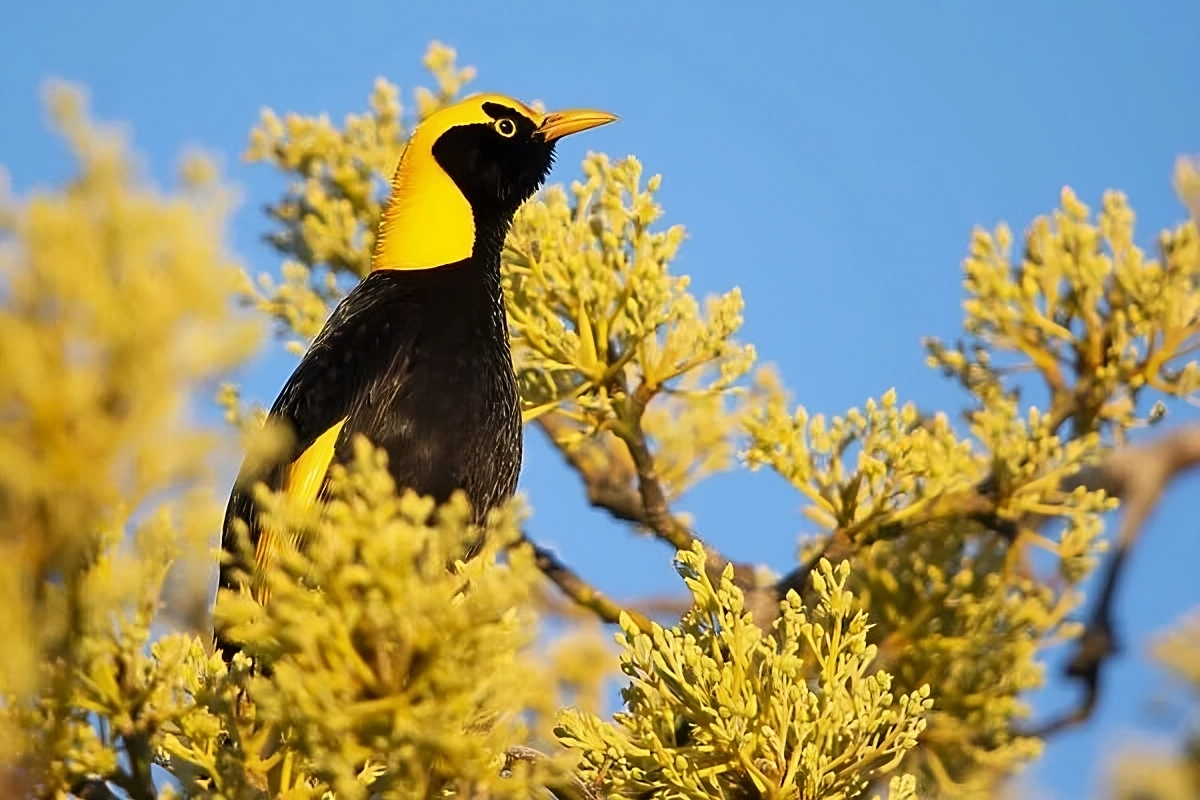
Good news! The Regent Bowerbird population is abundant throughout its range and is currently classified as “least concern” on the IUCN Red List of Threatened Species.
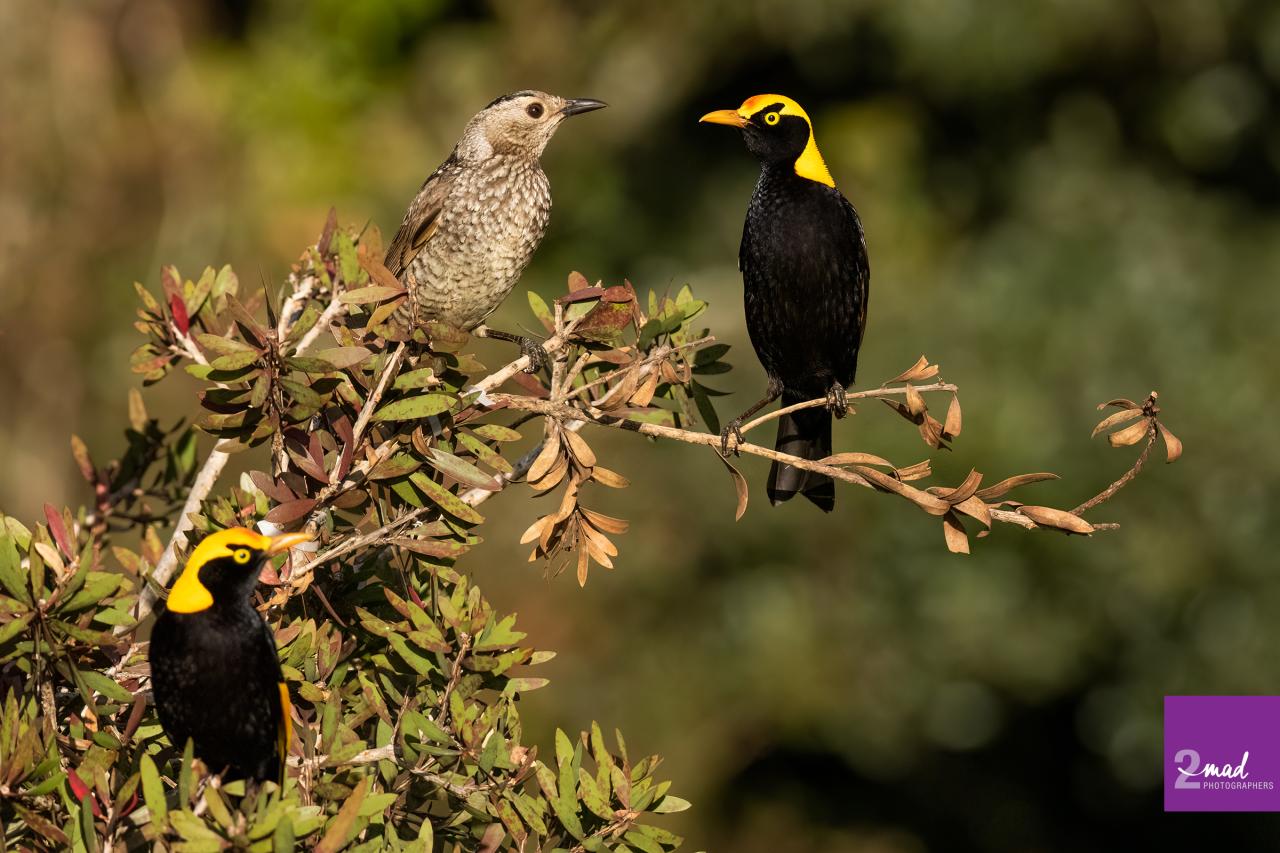
In summary, the Regent Bowerbird is a fascinating bird native to Australia that captures attention with its impressive appearance, intricate bower construction and interesting mating rituals. The use of “saliva paint” and tools by this species makes it different and captivating, while its state of conservation guarantees the preservation of this extraordinary bird in its natural habitat.





